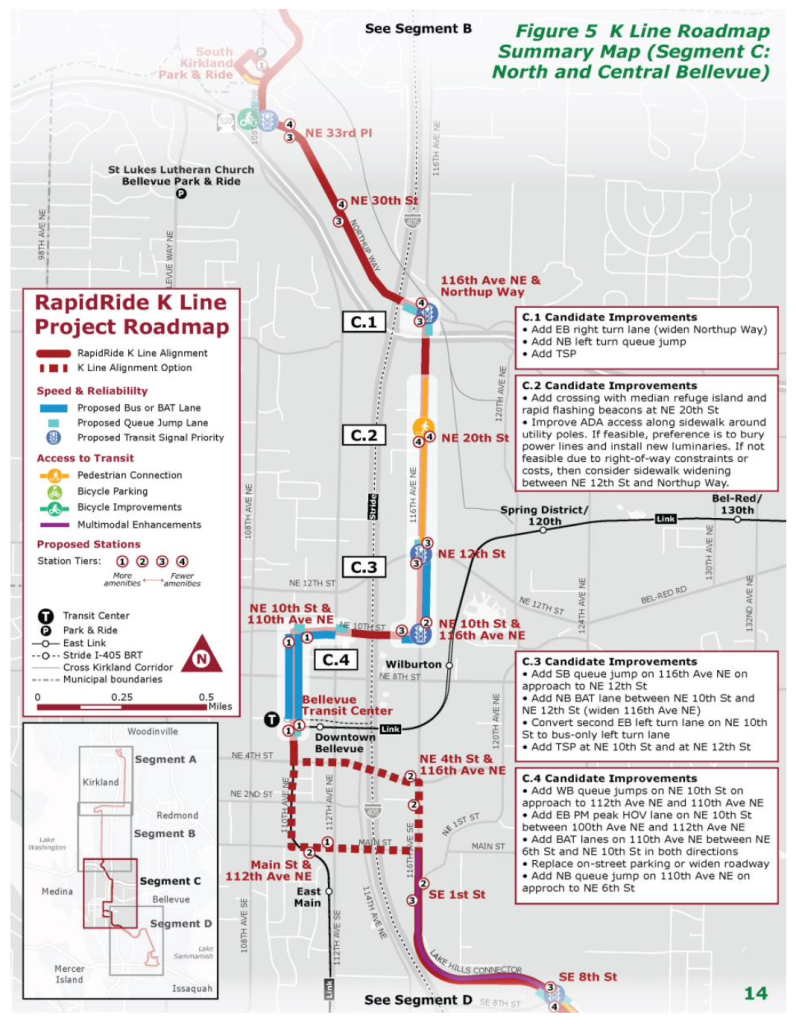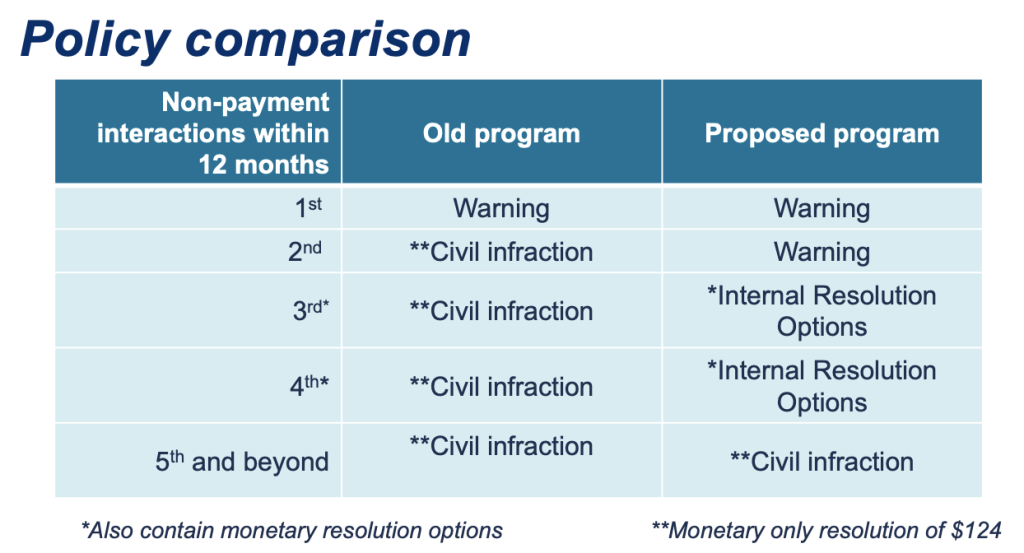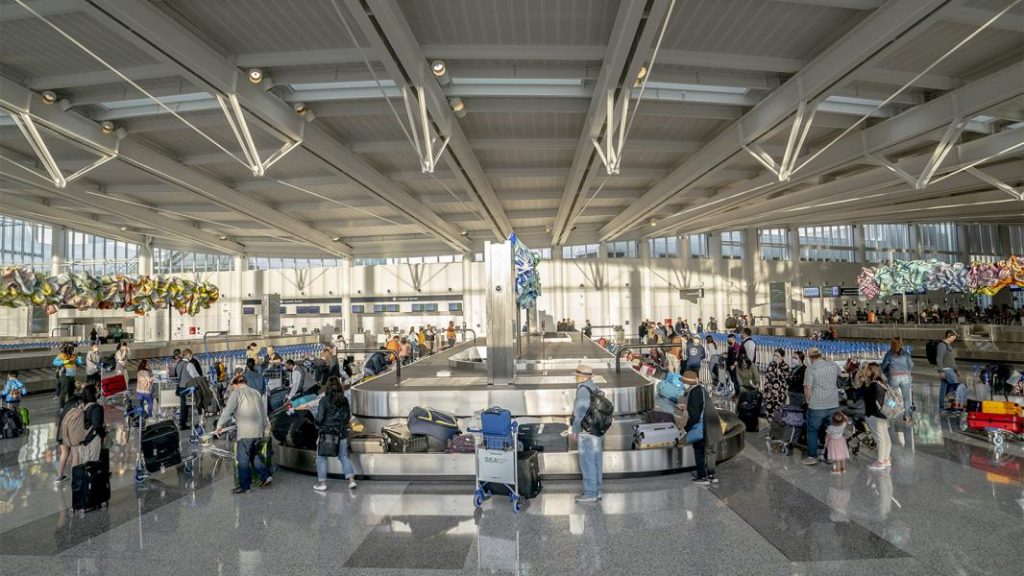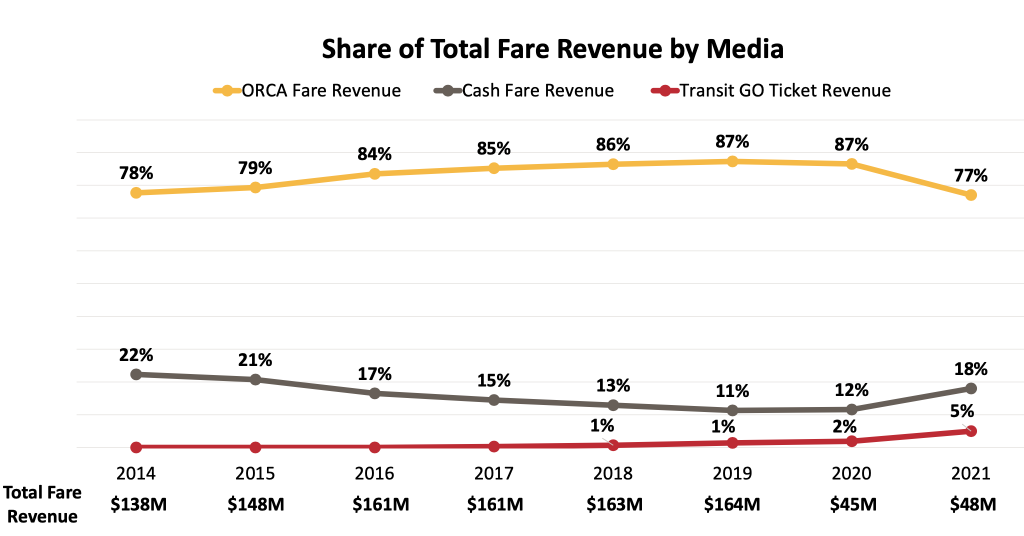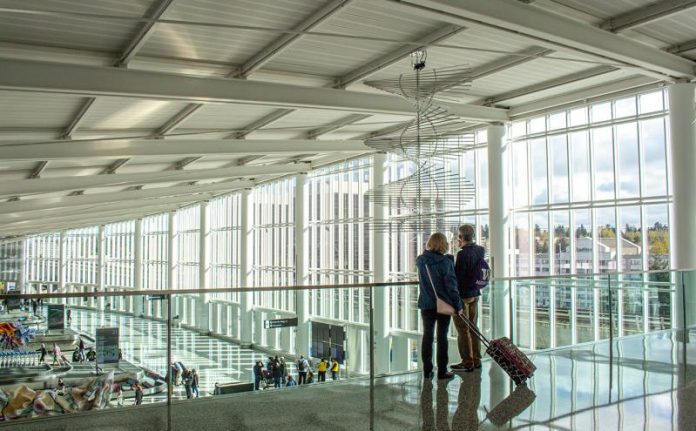
This week’s Transpo Notes roundup looks into Link light rail project timeline shifts due to labor disputes, restarts of the RapidRide R and K Lines, Sound Transit fare policy changes and extensions, King County Metro considering a cashless fare system, the opening of SeaTac Airport’s International Arrivals Facility, and Sound Transit putting the nail in the coffin of a West Seattle aerial gondola.
Link project timelines shift after labor dispute
Sound Transit has published a new agency progress report from February. While it doesn’t fully capture impacts resulting from the concrete worker labor dispute in King County, which recently ended, the report does show some of the project delivery impacts that the labor dispute has had among other things.
Most Link projects saw some changes to project schedules that cut into “project float” time, which is essentially the difference between scheduled project critical paths and target project openings. The biggest loser so far is East Link, which has seen all of its project float time evaporate, and in fact, go negative. That’s pushed back the East Link opening date at least 48 days from its original target of June 30, 2023 to August 17, 2023.
| Extension | December Float | January Float | February Float | Estimated Opening |
| East Link | 48 days | -48 days | -48 days | August 17, 2023 |
| Lynnwood Link | 107 days | 96 days | 75 days | July 17, 2024 |
| Downtown Redmond Link | 107 days | 83 days | 51 days | December 31, 2024 |
| Federal Way Link | 148 days | 97 days | 97 days | December 31, 2024 |
It could be even worse for East Link though. Mike Lindblom at The Seattle Times has reported that some King County Metro rail operations staff were informed on Tuesday that the opening could be pushed back to February 2024. Part of this has to do with not-so-simple corrective work that must be compeleted for concrete and rail work done to tie in East Link to International District/Chinatown Station.
Sound Transit is expected to more thoroughly address the impacts to project delivery timelines soon and what that could really mean, including the specter of delayed project openings.
RapidRide R and K Lines get new life
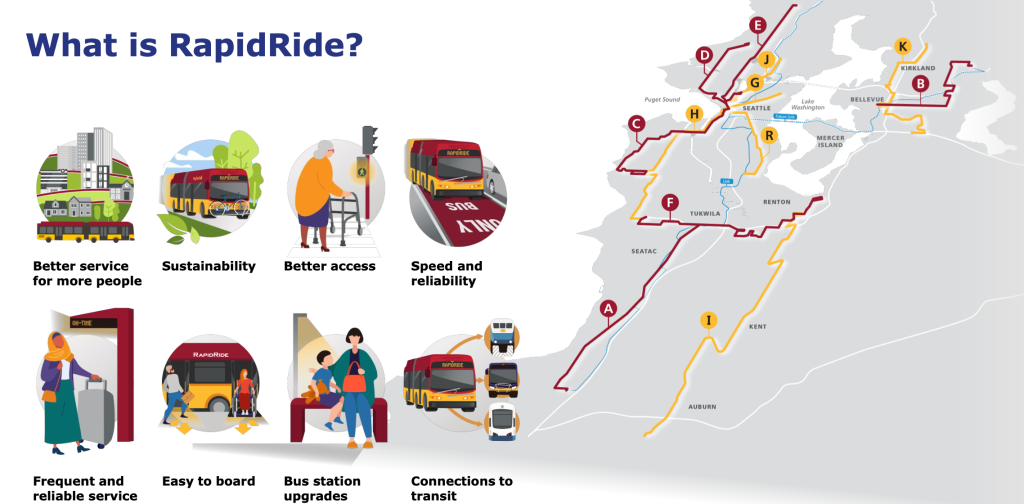
At the direction of the King County Council, Metro has restarted capital expansion planning for the RapidRide R Line (Rainier Avenue) and RapidRide K Line (Kirkland-Bellevue). Project development was paused for both projects during the pandemic as the stay-at-home orders and early drop in sales tax revenues raised long-term financial concerns for large capital projects. The agency also pivoted to higher priority lines already further along in project development.
With much of the pandemic now in the rearview mirror, Metro has begun to move ahead with planning and design work on both projects. The agency, however, will need millions of dollars more to complete the preliminary and final design work before proceeding to construction. Building the lines will also hinge on third-party grants, so there is still a long way to go and no target completion has yet been set. However, both projects will be a priority after the completion of the RapidRide G, H, I, and J Lines, which are either already under construction or soon to be.
Right now the K Line is at the beginning of its preliminary design phase with about 2% to 5% of design work completed. Project costs for the K Line are estimated at $80 million to $103 million (in 2021 dollars). The R Line is further along at 10% design. Capital costs are also a bit lower at $90 million to $100 million (in 2021 dollars) for the R Line, but that is largely because it’s also shorter than the K Line and would require less right-of-way acquisition.
As a result of changes in ridership resulting from the pandemic, the K Line appears to have lost some of its grant competitiveness. In a report, King County notes that the “K Line…is currently less competitive unless and until ridership recovers from the pandemic due to the trend of many people in Kirkland along the K Line corridor telecommuting rather than riding transit to an office.”
This finding could impact the K line’s ranking and eligibility for Small Starts grants from the Federal Transit Administration. Conversely, the report also notes that the “R Line is expected to remain highly competitive due to the population density along the route and the high ridership on the current Route 7.”
Small Starts are the largest source of grants for RapidRide projects, so if a project fails to secure funding from the program, it would put higher pressure on Metro to fully fund the project.
Sound Transit fare policies poised to change and extend
Earlier this month, Sound Transit previewed fare policy changes and extensions that the agency hopes to win approval from the full board this week. The proposals fall into four buckets:
- Reducing Sound Transit’s low-income fare program (ORCA LIFT) fare to $1.00 (it’s $1.50 right now);
- Extending Sound Transit’s participation in the regional reduced fare program for fully subsidized fares through 2024;
- Authorizing $400,000 for communications and promotion of reduced fare programs; and
- Extending the Fare Ambassador pilot program through 2022 with changes.
As part of the Fare Ambassador pilot program changes, Sound Transit plans to restore an escalating warning and penalty system for riders that fail to produce valid fare media. Riders will continue to be able to ride the system even if they can’t produce valid fare media, but the warnings and penalties could add up and even lead to civil infraction. However, penalties at third and four violation interactions in a rolling 12-month period could be light but could also mean fines of $50 and $75 respectively. That’s still a far cry from $124 fines and court involvement of the old fare enforcement paradigm.
However, boardmembers are lining up to propose amendments to the agency’s pilot program reform proposals.
Seattle-Tacoma International Airport opens International Arrivals Facility
After a very long road and delays, Seattle-Tacoma International Airport’s new International Arrivals Facility (IAF) partially opened on April 19th to passengers. Some flights landing will use the new space as final readiness testing is completed for full-scale use. Two to three daily flights are using the facility right now and that number will ramp up in the coming weeks. The facility will fully open to all international flights requiring passport control on May 10th.
The expansion essentially doubles international arrivals processing capacity at the airport, speeds up passport control processing, and increases the number of international arrival gates from 12 to 20. These updates will allow for international arrivals at both the S Concourse and A Concourse.
International passengers arriving at the S Concourse will cross a massive skybridge connecting to the A Concourse, which then funnels passengers into a secure corridor leading to the new passport control area. A landside baggage claim has also been constructed as part of the IAF’s Grand Hall. On the whole, it should provide a much more welcoming experience for international passengers transferring or arriving at the airport.
The increased capacity will also likely encourage more direct international flights to the airport. New international services are already scheduled to begin this year, including Istanbul (Turkish Airlines in May), Helsinki (Finnair in June), Papeete (Air Tahiti Nui in October), Bangalore (American Airlines in October), and Beijing-Daxing (Delta Air Lines in November). Though preclearance is done in Canada before departure, a service to Montréal-Trudeau (Air Canada in June) is also planned to launch. Other international routes planned for restoration are Dublin (Aer Lingus in July) and London-Heathrow (American Airlines in October).
Metro considers going cashless for fares
A significant share of King County Metro’s funding comes from fares, for example, $167 million in fares funded Metro service in 2019. Traditionally fare payment has come through a mix of mediums, including cash, ORCA cards, paper tickets, and Transit GO app tickets. However, Metro is considering how it might trim down the fare media options by eliminating cash fares. A specific timeline for a cashless transition has not been decided, but there does seem to be some impetus to eliminate cash fares sooner rather than later.
Cash fare payment has long been a small share of Metro’s total fare revenue, accounting for an ever-smaller share year by year prior to the pandemic. During the pandemic, however, revenue share by cash did experience an uptick, which appears to be the result of office-type commuter numbers falling. Nevertheless, 82% of fare revenue still came by ORCA cards or digital Transit GO Tickets in 2021, just a bit lower than the 89% in 2020.
Yet, there continue to be some benefits to cash over other fare mediums in the existing system. Paying in cash does allow riders to negotiate fare with operators, as sometimes riders don’t have the full fare amount on hand or may have qualified for a lower fare had they brought their ORCA card (people can and do forget their OCRA cards). Cash is also useful for occasional riders who may not own an ORCA card, or who are visiting from out of town, since ORCA cards typically cost $5 to purchase at particular locations and require knowledge of where and how to load fares and passes.
Metro’s analysis shows that most people paying cash tend to be low-income, ORCA LIFT-eligible riders as well as people of color, people who don’t speak English at home as their first language, and people with disabilities. Most riders who don’t use an ORCA card say that they just don’t ride enough or find it easier to pay cash; a distant third reason is that there aren’t enough locations to manage ORCA cards.
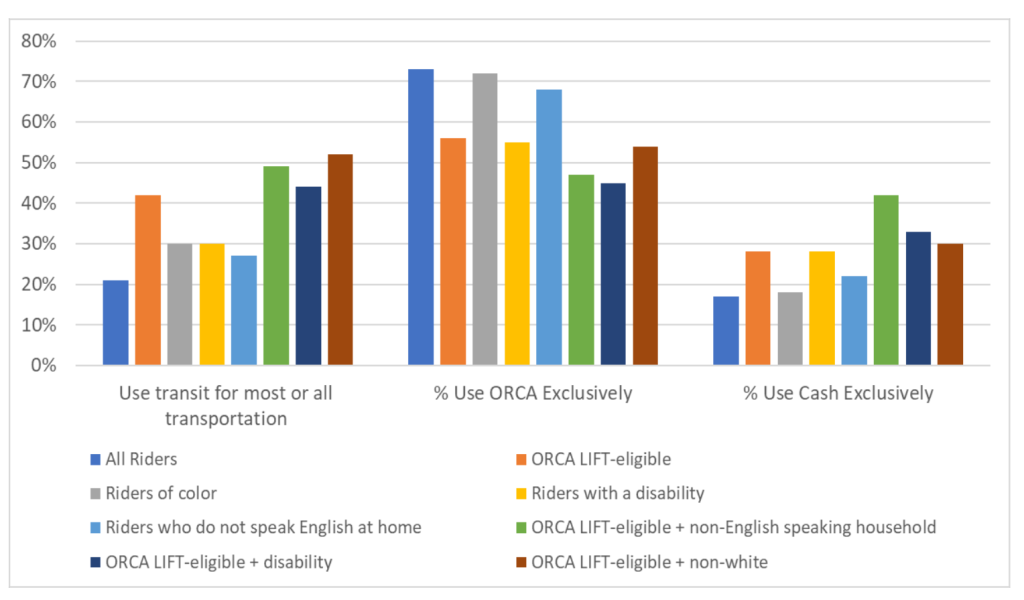
Nevertheless, Metro has an interest in eliminating cash fares because the fareboxes onboard buses are over 30 years old and running past their design life. The agency, however, does have enough spare parts to keep them in service through 2024. Replacing the equipment is not a cheap option and was estimated at $29 million in 2020.
The next generation of the ORCA fare collection system will add other fare payment options, such NFC capabilities for smartphones and credit/debit cards with chips. That may cover a decent range of riders who currently pay cash, but it may not close the gap for more financially-constrained riders, which is why Metro has been considering equity impacts of a cashless fare system. Other advancements may be useful for more financially-constrained riders, such as the ability to run a negative balance on ORCA to -$2.75, obtain ORCA cards at lower fees, and use an ORCA app on a mobile phone instead of having a physical card.
In engaging stakeholders, a range of strategies other have been suggested to ease a cashless transition, such as providing more limited-use tickets, offering wearable and sticker-based fare media, expanding the retail and human services network for ORCA card sales and top-ups, and adding ticket vending machines in more locations for target populations.
Interestingly, a report also suggests that automatic fare-capping, a system that automatically provides passes to all transit riders based on how much they ride/spend over periods of time without the need to purchase a time designated pass in advance, could be implemented in a cashless fare system. In practice this means that a rider who ends using transit beyond a certain threshold would be automatically upgraded to a weekly, monthly, or annual pass, resulting in cost savings. This benefit could certainly offer another strong incentive to move to cashless fare payment options.
West Seattle aerial gondola dismissed as a light rail alternative by Sound Transit
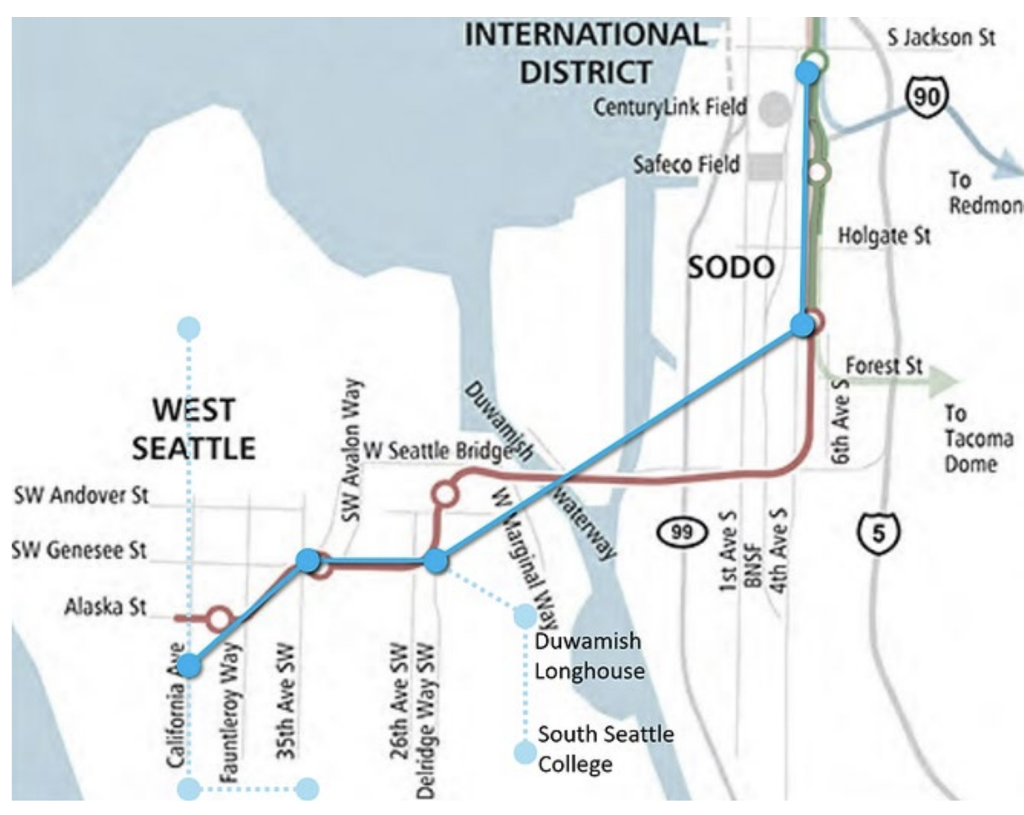
Sound Transit put to rest any notion of an aerial gondola between West Seattle and SoDo. Activists have been advocating for two years to build an aerial gondola, which would operate at slower speeds and transport fewer riders, instead of light rail on the corridor.
A report commissioned by Sound Transit evaluated the aerial gondola proposal and arrived at most of the same conclusions that Ryan DiRaimo published in a story on The Urbanist last year. In sum, the report issued three broad findings:
“Gondola/aerial tram technology is infeasible for this corridor due to significant technical limitations, including: a. Integration and compatibility with the existing Sound Transit light rail system especially as it relates to supporting convenient and seamless passenger trips on the system. b. The capacity of gondolas/aerial trams to serve projected ridership as well as both demand for surge events (e.g., sporting events) and future regional demand. c. The ability to expand regional high-capacity transit from any gondola/aerial tram segment in a manner consistent with Sound Transit’s Regional Transit Long-Range Plan.”
“Sound Transit continues to agree with our previous analysis that gondolas/aerial trams are not an appropriate regional high-capacity transit technology ‘because they operate on a local circulation level, lack regional applications, and each application would require new supporting facilities and services.'”
“Sound Transit is not authorized to use the ST3 tax revenue approved to construct a light rail system to instead construct a gondola system without additional voter approval.”
Sound Transit also outlined how seriously constrained an aerial gondola would be compared light rail. Hourly ridership capacity would be limited to 2,000 riders per direction versus 12,500 to 16,000 riders per direction for light rail. Average speeds would also be radically different with aerial gondolas mostly operating well below 20 miles per hour, while light rail operates at about 40 miles per hour with a maximum speed of 55 miles per hour. On top of this, the aerial gondola line would permanently force another transfer, turning a one- or two-seat ride on transit to a two- or three-seat ride to most destinations. Time penalties add up and can directly discourage transit use.
Ultimately, an aerial gondola line was assessed as insufficient for meeting projected ridership demand for the planned West Seattle light rail corridor and also as precluding further transit expansion southward toward destination like White Center in future years.
Corrections (4/27/2022): Details on the IAF opening were clarified.
Update (4/28/2022): New details on the East Link opening delay were added.
Stephen is a professional urban planner in Puget Sound with a passion for sustainable, livable, and diverse cities. He is especially interested in how policies, regulations, and programs can promote positive outcomes for communities. With stints in great cities like Bellingham and Cork, Stephen currently lives in Seattle. He primarily covers land use and transportation issues and has been with The Urbanist since 2014.


